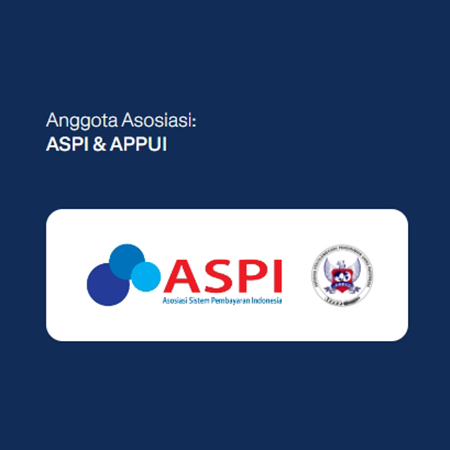Income tax in the United States (US) has always been an interesting topic, especially for foreign workers working in the country or earning income from US sources. In 2025, the Internal Revenue Service (IRS) has released several tax adjustments that affect income tax rates, standard deductions, and special benefits for foreign workers.
We will discuss in-depth the changes in the income tax rates in the US for 2025. Then, how these affect foreign workers and practical steps they can take to optimize their tax liabilities. With simple language and up-to-date data, let’s explore this topic!
Read Other Transfez Articles About Income Tax
How to Calculate Income Tax in Malaysia
Income Tax in Australia: Tax Saving Tips for Locals & Migrant Workers
Income Tax in Japan: A Complete Guide for Foreign Residents and Migrant Workers
How to Report Germany Income Tax
What Are the Changes in the Income Tax in United States for 2025?

Each year, the IRS adjusts income tax rates and income thresholds to accommodate inflation. According to the IRS announcement in October 2024, here are the key changes for the 2025 tax year:
1. Increase in Standard Deductions
The standard deduction is the amount of income that can be deducted from taxes before the tax rate is applied. For 2025, the standard deductions have increased as follows:
- Single or married filing separately: $15,000 (up $400 from $14,600 in 2024).
- Married couples filing jointly: $30,000 (up $800 from $29,200).
- Head of household: $22,500 (up $600 from $21,900).
This increase helps reduce taxable income, meaning foreign workers with low to middle incomes may pay less tax. However, foreign workers who do not qualify for the standard deduction (e.g., non-residents) need to understand the special rules that apply to them.
2. Adjustments to Tax Bracket Thresholds
The US uses a progressive tax system with seven tax rates: 10%, 12%, 22%, 24%, 32%, 35%, and 37%. For 2025, the income thresholds for each tax bracket have increased by approximately 2.8% due to inflation. Here are some key points:
- 37% rate: Applies to income over $626,350 (single) or $751,600 (married filing jointly).
- 32% rate: Applies to income over $197,300 (single) or $394,600 (married filing jointly).
- 12% rate: Applies to income over $11,925 (single) or $23,850 (married filing jointly).
Foreign workers who are US tax residents (e.g., green card holders or those passing the substantial presence test) will be taxed at these rates based on their worldwide income. However, non-resident foreign workers are typically taxed at a flat 30% rate on US-sourced income unless there is a tax treaty that reduces this rate.
3. Increase in Foreign Earned Income Exclusion (FEIE)
One of the great benefits for foreign workers working outside the US is the Foreign Earned Income Exclusion (FEIE). For 2025, the FEIE limit has increased from $126,500 to $130,000. This means foreign workers who qualify can exclude up to $130,000 of income earned abroad from US income taxes.
To qualify for FEIE, foreign workers must pass one of two tests:
- Physical Presence Test: Being outside the US for at least 330 days during a 365-day period.
- Bona Fide Residence Test: Being a bona fide resident of another country for an entire tax year.
In addition to FEIE, the Foreign Housing Exclusion (FHE) also increases, with a base limit of $20,800 and a maximum limit of $39,000 for 2025. This allows foreign workers to reduce certain housing costs from their taxable income.
Transfez, Easy Money Transfers to 70+ Countries Worldwide
How Does This Affect Foreign Workers?
These changes have different impacts depending on the foreign worker’s tax status (resident or non-resident) and their work location. Here’s a detailed explanation:
- Foreign Workers with Resident Tax Status
Foreign workers who are considered US tax residents (e.g., green card holders or those who live in the US for a significant period) are taxed on their worldwide income. The increase in standard deductions and tax bracket thresholds can reduce their tax liability, especially if their income is in the middle range.
However, if they work outside the US, FEIE and FHE become important tools to reduce taxes. For example, a foreign worker earning $150,000 abroad can exclude $130,000 through FEIE, meaning only $20,000 would be taxed by the US. If they also have qualifying housing expenses, FHE can further reduce their taxable income.
- Non-Resident Foreign Workers
Non-resident foreign workers are only taxed on income sourced from the US, such as wages from a US job or dividends from US companies. The flat 30% tax rate typically applies unless there is a tax treaty between the US and their home country. For example, the US-Indonesia tax treaty allows for a reduced tax rate on certain types of income, such as royalties or interest.
However, non-residents are not eligible for the standard deduction or FEIE, so they need to plan their taxes carefully to avoid overpaying. It’s important to check specific tax treaties and consult with a tax professional.
- Foreign Tax Credit (FTC)
For foreign workers who pay taxes in another country, the Foreign Tax Credit (FTC) allows them to reduce their US tax by the amount of tax already paid to another country. FTC is useful for avoiding double taxation. For example, a foreign worker who pays income tax in Indonesia can claim a credit for that tax against their US tax liability, provided the income is also taxed in the US.
Practical Steps for Foreign Workers

To optimize tax liabilities in the US in 2025, foreign workers can take the following steps:
- Understand Your Tax Status: Determine whether you are a resident or non-resident taxpayer by checking the substantial presence test or your immigration status.
- Utilize FEIE and FHE: If you work outside the US, make sure you qualify for FEIE and FHE to minimize taxes.
- Use Tax Treaties: Check if your home country has a tax treaty with the US to reduce tax rates or avoid double taxation.
- Consult a Tax Professional: US taxes for foreign workers can be complex. An experienced tax consultant can help you claim credits and exclusions correctly.
- Meet Deadlines: Foreign workers are granted an automatic extension until June 15, 2025, to file taxes, but taxes owed must be paid by April 15, 2025, to avoid penalties.
Download the Transfez App
The Transfez app can help you transfer money abroad faster, cheaper, and more efficiently. Transfez Business can also assist your business with international transactions. If you want to send money to family members abroad for education, work, or travel, Transfez is ready to assist. This app is available on both Android and iOS. Download now!









